Concrete Dining Table: Dining Table #5
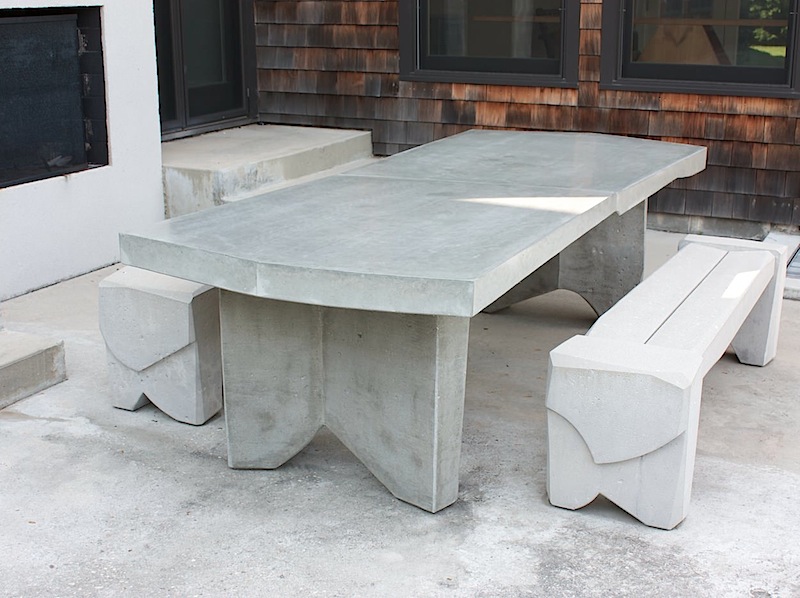
Dining Table #5
Cast Concrete and Sapele 30”H x 108”L x 42”W
Bench #7 From Series #2
Cast Concrete 18″H x 68″W x 17″D
Dining Table #5 represents a moment of transition in my work. I was forced to refine my understanding of the material in order to cast the table top. I read everything that I could on GFRC concrete. GFRC stands for glass fiber reinforced concrete. The resulting concrete is about 10,000psi with the ability to be cast quite thin. My style with concrete adds a wrinkle that effects the mix design…I like to be able to cut into the concrete with saws and grinders to change the shape of a casting. I need this freedom to make the table one-of-a-kind.
Technical issues are only part of the story, on to the composition! I always make models when I am involved in a large piece with many challenges. I knew that I wanted the table to be paired with Bench #7 From Series #2 so I pulled out the scale model for that bench. There were a few things that I had resolved on paper before getting this far. I knew that the Table would be cast in two halves making the piece sort of manageable. I also knew that I would be using the seam as part of the design. The scale model quickly evolved. The asymmetrical shaping of the top was going to be locked into the casting form. I would use the thickness of the edge to introduce spontaneity into each table.

The shape of the top suggested that I design a stool to accompany the table. Two per each end work wonderfully well.

I decided to take the time to design a second base out of wood. I am yet to build it but i think that it has a lot of potential, especially for indoor use.
I am very pleased with the way the cable came out. The legs are truly massive, but the relief cuts help them transcend their visual weight. This is just a visual trick- they weigh over 450 pounds per leg! The intricacy of the cast legs flow into the hourglass shape of the concrete top. The angled movements come together at the seam, which is also angled.
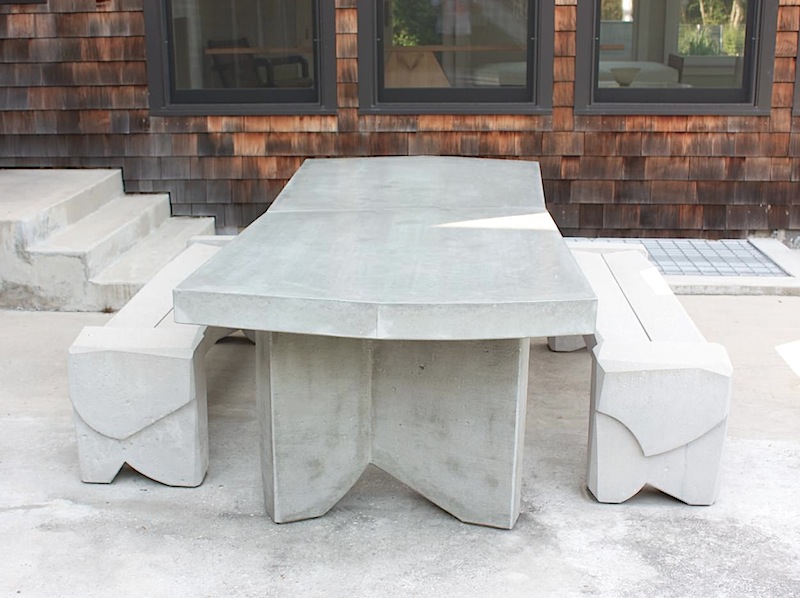
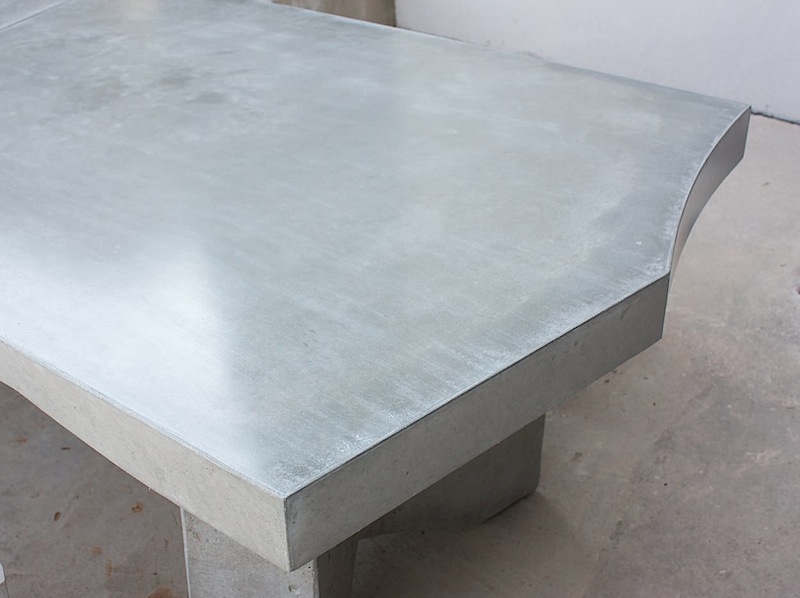
The shaping of the edge uses the center line as a moment. The result is quite unusual for concrete!
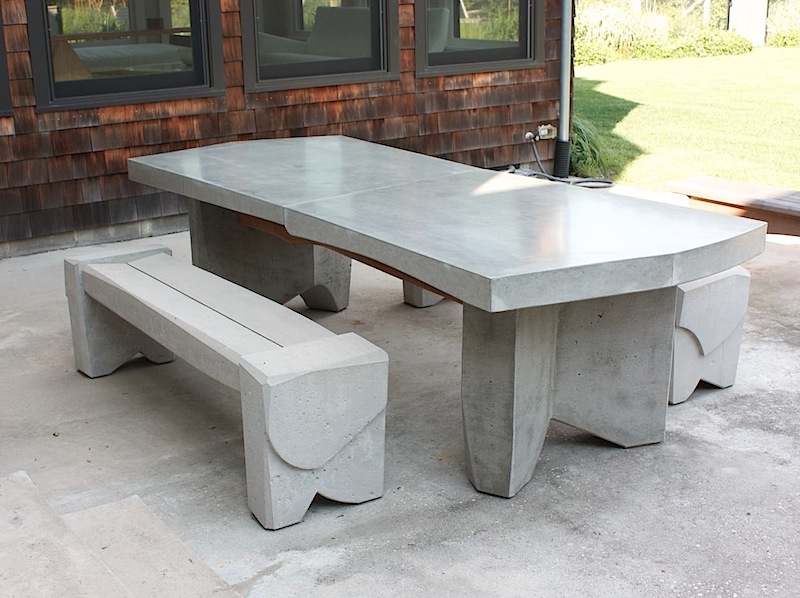
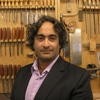 By Nico Yektai -
By Nico Yektai -New York based designer/maker Nico Yektai opened the doors to his Hamptons studio in 1995 after completing the MFA program at the School For American Craft at the Rochester Institute of Technology. The rigorous technical training complimented his background in Art History, which he studied, at Hobart College in Geneva NY. Yektai has synthesized this background into a singular style that has gained him national attention. Visit nicoyektai.com for more information